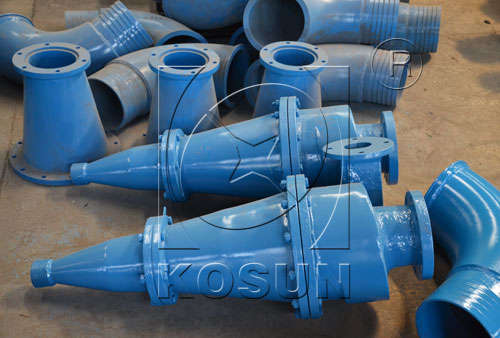Sep 19, 2013
Hydrocyclone desilter also can be called desilter or desilter separator. We all know, it’s the 3rd phase solids control equipment or 4th mud purification device in any mud process system. What affects desilter cost or sale price?
The following will tell you general issues affecting hydrocyclone desilter price, which include design, cones number, structure, configuration, manufacture process, etc.
Hydrocyclone desilters are mainly in the same structure as combined of hydrocyclones, steel frame, pipeline, hacking, and/or bottom shaker, pressure gauge. Some users prefer desilter without bottom shaker.

We need to weld steel frame with desilter feed inlet and discharge output line. The pedestal is also a part of steel frame. If there is no special requirement, the bottom shaker will be set over hacking.
To make desilter, the main issue is to weld parts together. And arrange hydrocyclones to be sequential as parallel or cylinder. The cones line can be installed parallel to bottom shale shaker or perpendicular to shaker. Please find following sketch for more information.
We commonly use 4″ hydrocyclone. Subject to clients’ demands on processing capacity, the cones size, number, and material are customizable.
There are also 3″ or 2″ desilter cone. The hydrocyclones can be made of casting polyurethane, milling polyurethane, milling, mixed rubber, oil resisting rubber, PTEF, MC Nylon, high-chromium iron, high-tungsten casting iron, etc.
According to actual test on oilfield mud system, the casting polyurethane cones can be used for over 2100 hours, and the biggest broken position is about 80mm away with cones bottom.
Professional from KOSUN suggests users and desilter manufacturers adopt casting polyurethane cones to ensure high quality and excellent performance with high efficiency.
Furthermore, desilter cones connection mainly fall into two types as flange type and coupling type. Presently, more and more clients prefer coupling type cones for its ease of installation and operation.
In terms of the number desilter cones used, we can configure 24 desilter cones at most fitted with ball valves. This will provide flexible treating capacity for different users and in different well drilling conditions